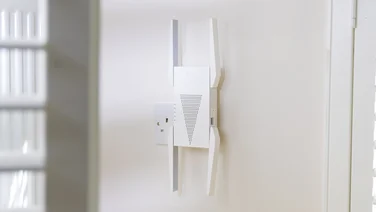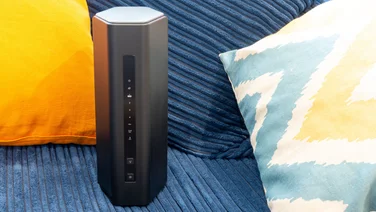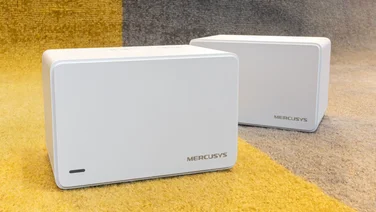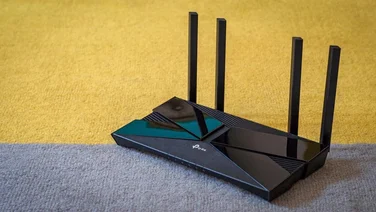To help us provide you with free impartial advice, we may earn a commission if you buy through links on our site. Learn more




The Fritz!Box WLAN 3270 is a less expensive alternative to the Ultimate award-winning AVM Fritz!Box Fon WLAN 7390. Like the 7390, the 3270 is a dual band ADSL and VDSL modem router with a USB2 port to which you can connect USB drives and printers, but it lacks the telephony features of the 7390. It can’t transmit on the 2.4GHz and 5GHz bands simultaneously, either, so if you have devices that need 2.4GHz, you’ll have to do without the performance boost 5GHz can give you.

In terms of wireless performance, the 3270 performed adequately on the 2.4GHz band during testing and very well on the 5GHz band. When using our Centrino laptop’s built-in Wi-Fi adaptor and the 2.4GHz band we saw data transfer speeds of 29.1Mbit/s at one metre, 31.1Mbit/s at 10 metres and 11.7Mbit/s at 25 metres. These speeds are beaten by those of Draytek’s Vigor 2850n (our current performance champion) and the Fritz!Box WLAN 7390, but those routers cost £70 more.
The performance improved when we switched to the 5GHz band. When using our Centrino laptop’s own Wi-Fi adaptor we saw data rates of 58.6Mbit/s at one metre, 52.4Mbit/s at 10 metres and 17.6Mbit/s at 25 metres. When using AVM’s Fritz!WLAN USB Stick N Wi-Fi dongle (£33 from www.conrad-uk.com) and the 5GHz band, we saw a large speed boost to 68.1Mbit/s at one metre, 53.4Mbit/s at 10 metres and 27.4Mbit/s at 25 metres. These speeds are plenty fast enough to stream high-definition video over your home network.
Curiously, the Fritz!Box WLAN 3270 has four Fast Ethernet ports instead of the Gigabit Ethernet ports we expect. This could be because the 3270 is aimed at the home market rather than industry, and Wi-Fi is much more likely to be used in the home than wired Ethernet, but it is disappointing; Gigabit Ethernet is particularly useful when copying large amounts of data to a NAS. Regardless of the 3270’s other features, we expect Gigabit Ethernet on a £125 router.

Something that definitely didn’t disappoint is the 3270’s sophisticated user interface, which provides the perfect mix of information, help and options. The user interface is colourful and friendly without being patronising, and it makes good use of HTML to present the options in a clear and meaningful manner. It even uses bar charts and tables to present information, a good example being the way it shows the effect of other wireless networks and radio interference on your network. This lets you select the best band and channel for your network should the channel on which you’re currently operating become congested. This is a user interface that begs the user to engage with it and enjoy the high-level features it has to offer, which is a rarity when it comes to routers.
The 3270’s user interface also makes it incredibly easy to configure connected USB devices. Simply connect a USB drive and the 3270 recognises and mounts it as network storage. It has a built-in DLNA media server too, and we were able to watch MP4 music videos and listen to music stored on an attached USB drive over the network without a problem. The NAS and media server functions make the 3270 a fantastic hub around which your home network can develop, and the combination of the 3270 and a spare external hard drive could be a cheaper option than buying a full NAS unit. Connecting, configuring and using a USB printer was similarly easy, and you can also connect 3G USB modems so that you have a method of connecting to the internet should your main connection go down.

It may not be a speed demon, and if you can stretch to it we’d still recommend the AVM Fritz!Box Fon WLAN 7390 with its twin USB ports, advanced VoIP and analogue telephony features and Gigiabit Ethernet ports, but the Fritz!Box WLAN 3270’s combination of an excellent user interface, useful USB features and dual band Wi-Fi make it a good buy.






